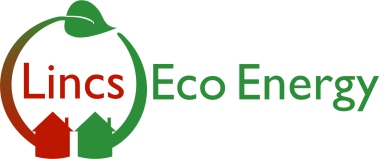VAT
From our point of view (accountant) it is all about the installation and supply.
Businesses that supply materials only must charge VAT usually at the standard rate currently 20%.
However there are some situations when lower rates of VAT can be charged.
New Builds and Listed Buildings
Where we supply the materials and provide the installation in a building that is either a new build or a listed building we can supply at 0% VAT.
The Reduced 5% Rate
The reduced rate applies to installations in residential accommodation or a building used solely for a relevant charitable purpose of
- solar panels
- ground and air source heat pumps
- wood fuelled boilers
- wind and water turbines
- insulation
- draught stripping
- controls for central heating and hot water systems
What does not qualify for the reduced rate?
- secondary or double glazing
- energy efficient fridge freezers
- energy efficient boilers
- materials you buy without them being installed
Grants for Energy Saving Equipment
If you are 60 or over you could get the lower rate on installation, maintenance and repair of a central heating system and a renewable source heating system.
Also if you are on certain benefits you will get the lower rate on the installation of heating appliances such as specific types of immersion heaters, boilers, storage heaters, gas heaters and radiators.
Income Tax
For installations that are owned by individuals, depending on the size and nature of the installation, the receipt of the income from the feed in tariff (FIT) (and export tariff) may or may not be subject to income tax. The Renewable Heat Incentive is currently only available to commercial installations and therefore will be taxable.
If there is no intention to generate significantly more energy than would be consumed onsite; the FIT income is exempt to income tax. This is only if the microgeneration equipment is installed at or near to a domestic premises.
For FIT generating assets owned by individuals, partnerships and other non incorporated entities that do not meet the above criteria (and all RHI assets), the normal income tax rules will apply to any profit derived from the generation of electricity/heat.
Corporation Tax
Incorporated entities that generate electricity/heat and recieve income from FIT/RHI (and income from the sale of electricity/heat) will be fully taxable as a trading entity and subject to normal corporation tax rules.
Capital Allowance
Expenditure on Solar Panels are to be treated as special rate expenditure i.e. allocated to the special rate pool on which capital allowances will be claimed at 8% Writing down Allowance (WDA) per annum. (The taxpayer will still be able to claim the AIA against such expedaiture).
Machinery and Plant allowances of 18% WDA per annum can be claimed on other electrical/heat generating assets provided it is not a long life asset (this is a life under 25 years). On other aspects of the renewable installation, capital allowances will be subject to the usual rules.
Expenditure is subject to 8% WDA if the asset meets the definition of long life assets.
The AIA can still be claimed on assets on which the tarrif is recieved. This was increased from £25 to £250k per annum from 1/1/13 until 31/12/14.
If your assets on which the tariffs have been paid under either the FIT or RHI schemes, Enhanced Capital Allowances (ECAs) will not be available. However, the taxpayer will have the option, they can either claim ECAs or the tariff. If they claim ECAs and sunsequently recieve a tariff payment then the ECAs will be clawed back. For CHP (Combined Heat & Power) installations the ECAs change took place in April 2014.


